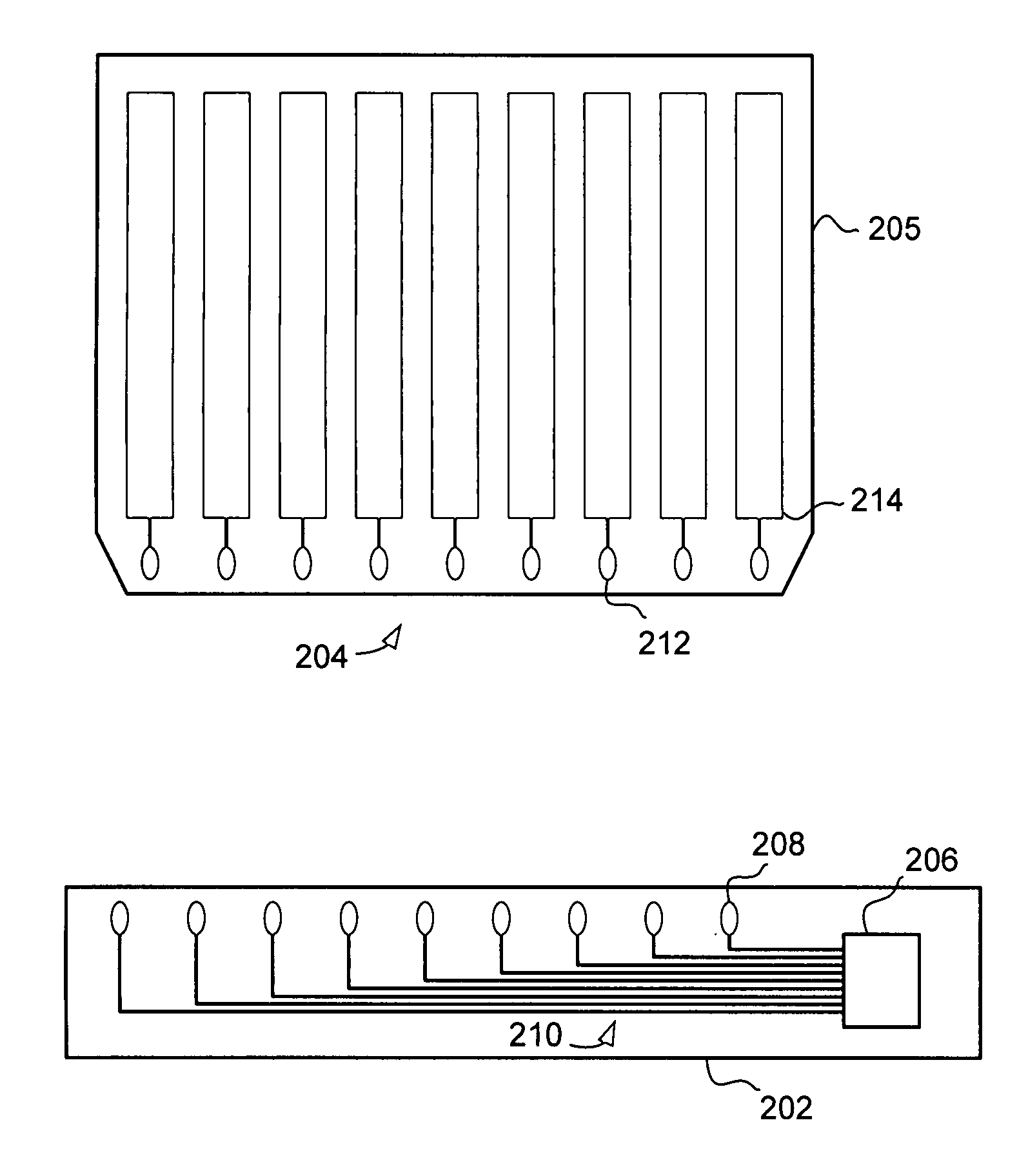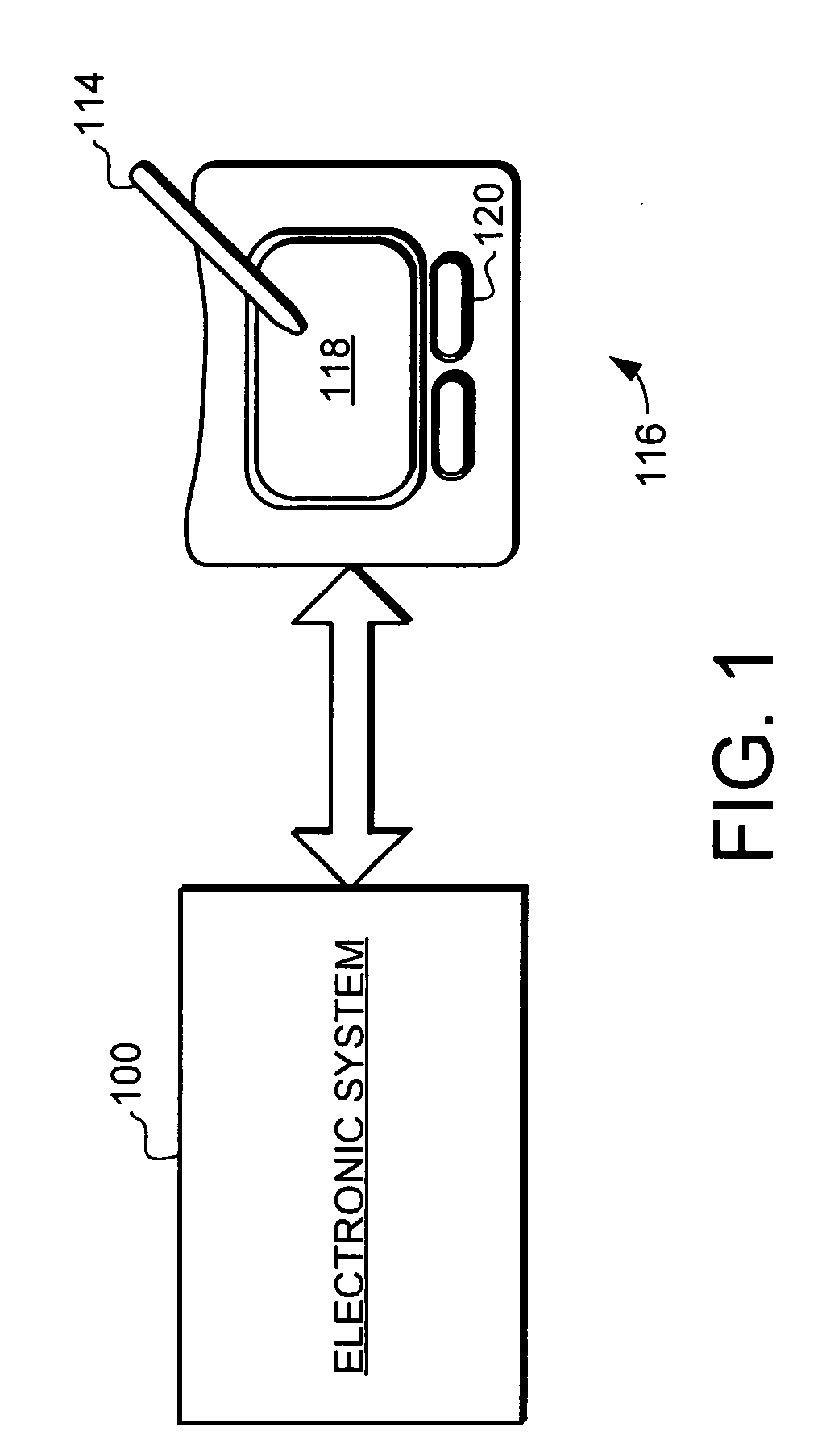Touch pad with flexible substrate
a flexible substrate and touch pad technology, applied in the field of touch sensor devices, can solve the problems of relative inflexibility of some designs to conform to the limited space available in some applications, the cost of some previous designs, and the inability to meet the needs of some applications, etc., to achieve reliability and flexibility, high temperature resistance, and cost-effective
- Summary
- Abstract
- Description
- Claims
- Application Information
AI Technical Summary
Benefits of technology
Problems solved by technology
Method used
Image
Examples
first embodiment
[0026] Turning now to FIGS. 2 and 3, a touch sensor device 200 is illustrated. The touch sensor device 200 includes a flexible circuit substrate 202 and a sensor component 204. FIG. 2 illustrates the flexible circuit substrate 202 and sensor component 204 separately, while FIG. 3 illustrates the substrates coupled together as they may be in a completed touch sensor device.
[0027] In the illustrated embodiment, the flexible circuit substrate 202 includes a touch sensor controller 206, the touch sensor controller 206 coupled to a plurality of pads 208 through a plurality of conductors 210. The sensor component 204 includes a substrate 205 and a plurality of columnar sensing elements 214 for detecting an object proximate to the sensing elements 214. Each of the plurality of sensing elements 214 is coupled to a pad 212. When assembled together and in operation, the touch sensor device 200 detects objects that are proximate to the sensing elements 214, and using the pads 208 and 212, cond...
second embodiment
[0042] Turning now to FIGS. 4 and 5, a touch sensor device 400 is illustrated. The touch sensor device 400 includes a flexible circuit substrate 402 and a sensor component 403. The sensor component 403 includes first sensor substrate 404 and a second sensor substrate 406. FIG. 4 illustrates the flexible circuit substrate 402, first sensor substrate 404 and second sensor substrate 406 separately, while FIG. 5 illustrates the substrates 402, 404 and 406 coupled together as they would be in a completed touch sensor device. In this embodiment the two sensor substrates 404 and 406 each provide object position detection in a different direction. Specifically, each sensor substrate includes a set of sensing elements arranged in a different, nonparallel (e.g., orthogonal) direction. Taken together, the two sensor substrates 404 and 406 provide the ability to detect and precisely locate a proximate object in two dimensions. Alternatively, the two sensor substrates 404 and 406 can also enable...
third embodiment
[0046] Turning now to FIG. 6, a third embodiment touch sensor device 600 is illustrated. In this embodiment the touch sensor 600 includes a flexible circuit substrate 602 and at least one sensor component (not shown in FIG.). This embodiment, like the previous two embodiments uses a flexible circuit substrate with relatively high temperature resistance to provide an improved input device. When combined with relatively low-temperature-resistant sensor components the embodiment can provide significant cost advantages when compared to making the entire touch sensor using high-temperature-resistant material.
[0047] In this embodiment, the flexible circuit substrate 602 includes an integral tail portion 604. The tail portion 604 comprises a relatively narrow strip of flexible circuit substrate with at least one conductor 606 and at least one contact electrode 608 at its end for connection or communication to an electronic system. Because the integral tail portion 604 is made of a flexible...
PUM
 Login to View More
Login to View More Abstract
Description
Claims
Application Information
 Login to View More
Login to View More - R&D
- Intellectual Property
- Life Sciences
- Materials
- Tech Scout
- Unparalleled Data Quality
- Higher Quality Content
- 60% Fewer Hallucinations
Browse by: Latest US Patents, China's latest patents, Technical Efficacy Thesaurus, Application Domain, Technology Topic, Popular Technical Reports.
© 2025 PatSnap. All rights reserved.Legal|Privacy policy|Modern Slavery Act Transparency Statement|Sitemap|About US| Contact US: help@patsnap.com



